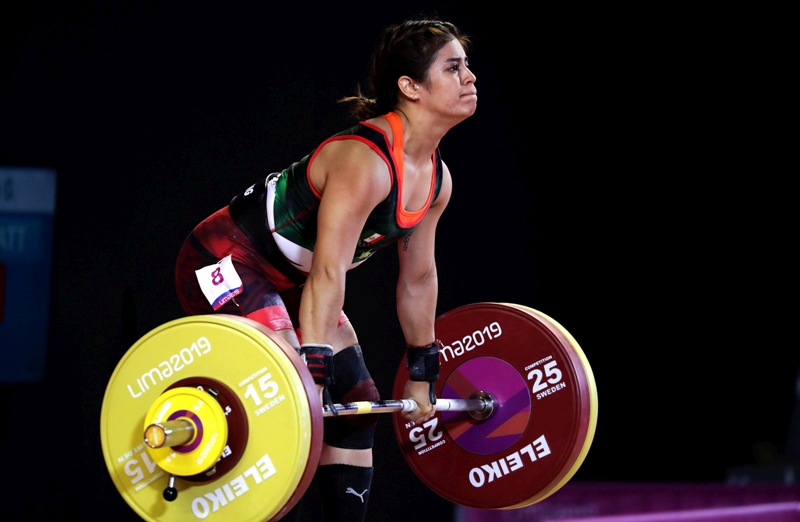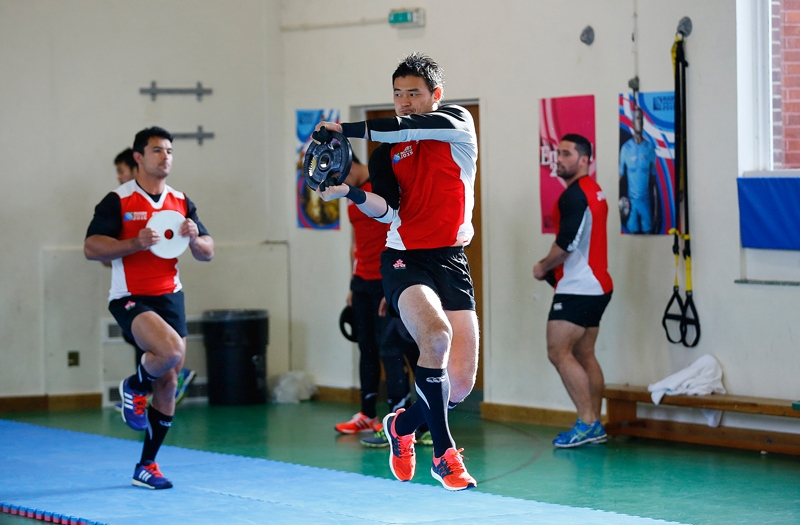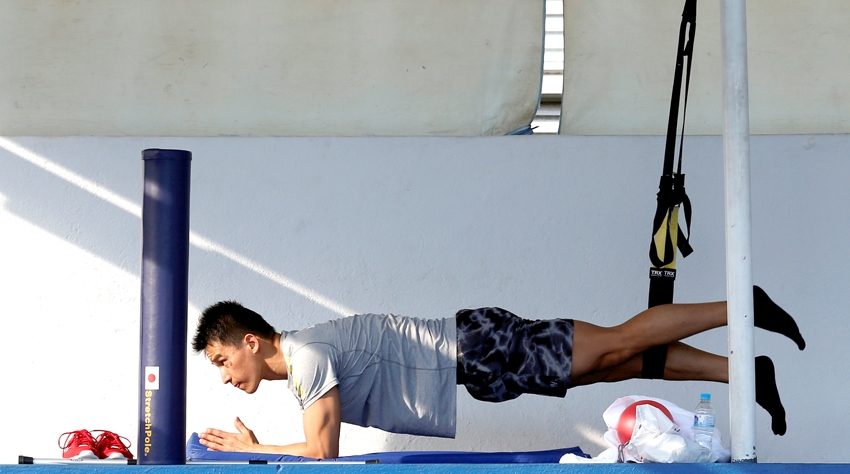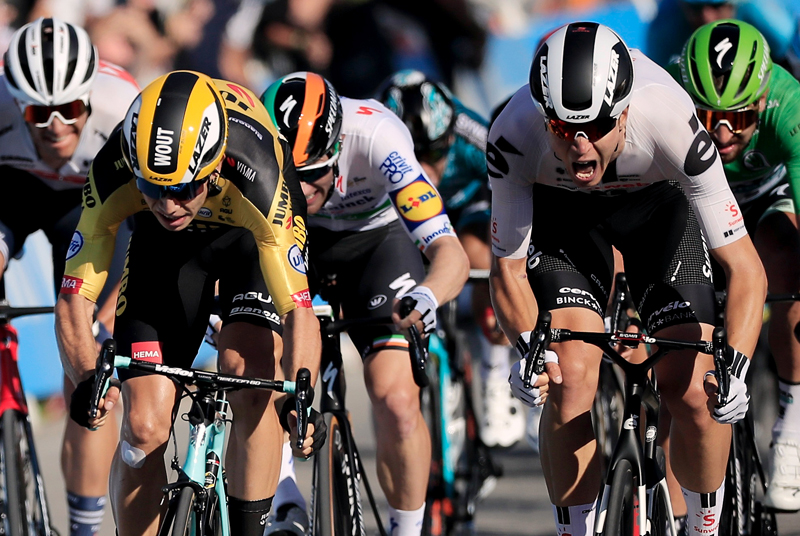You are viewing 1 of your 1 free articles. For unlimited access take a risk-free trial
Strength training for endurance: don't fail by working to failure!

As regular Sports Performance Bulletin readers will know, in recent years there’s been a growing body of evidence demonstrating that the correct use of strength training can improve endurance performance. In particular, studies on runners and cyclists have shown that the use of lower-body, heavy-weight strength exercises can improve muscle economy. In short, this means that muscles become more efficient at converting chemical energy into forward motion, which in turn means that less energy and oxygen is required to sustain a given pace, resulting in less fatigue, especially in longer duration events. The importance of excellent muscle economy can’t be overstated as research shows that excellent economy is a key explanation for the superior performance of top athletes.
The conventional approach for building strength has been to perform sets of exercises targeting the appropriate muscles using enough weight so that while a set of reps can be completed, it is only just possible. In other words, trying to perform another rep with strict form becomes impossible – also known as training to failure. Eagle-eyed readers among you will have noticed however that in Tom Whipple’s recent article on strength training (which you can read here), the emphasis was on NOT training to failure. As Tom explained, this is because some recent research suggests that training to failure is not only unnecessary, it might even be counterproductive. And now, further evidence indicates that this is indeed the case.
The research
In this study, researchers set out to investigate the effects of a 10-week 'training to failure' resistance programme on strength adaptations in women, and compare it to equivalent training protocols where strength training was not to failure. The 89 subjects were split into three training groups:- Three sets of reps, each to failure.
- Four sets of reps not to failure, but with the volume adjusted (4 sets of 7 reps) to equal that of the ‘train-to-failure’ group.
- Three sets of reps not to failure (3 sets of 7 reps), which meant that the total volume of work done was less than in groups one and two.
The findings
At five and ten weeks, all of the groups showed significant gains in muscle strength; by the end of the trial, the strength gains for groups 1, 2 and 3 were 28.3%, 26.8% and 28.3% respectively – ie with no significant differences. Likewise, muscular endurance increased similarly across all groups. What was interesting however was that during high-speed movements, peak torque increased ONLY in groups 2 and 3 – ie subjects who didn’t train to failure (by 13.7% and 4.1% respectively).Another interesting finding was that whereas muscle thickness and bulk increased in the groups 1 and 2 (training to failure and not training to failure but with an equivalent work volume) by 17.5% and 8.5% respectively, there was no significant muscle mass gains in group 3 (not to failure, lower volume). The scientists in the study concluded that their ‘data showed that training of repetitions to failure do not yield additional overall neuromuscular improvements’. Eur J Transl Myol. 2017 Jun 27;27(2):6339. doi: 10.4081/ejtm.2017.6339. eCollection 2017 Jun 24.
Sports Performance Bulletin verdict
This is another study suggesting that for athletes trying to enhance performance, training to failure is NOT recommended. It didn’t build extra strength and it resulted in less peak torque (force) during fast movement than not training to failure. This is important because as an endurance athlete, you want to develop strength that can increase your muscles’ ability to generate force during movement. As endurance athletes, we also want the benefits of increased strength without muscle bulk. So while a bodybuilder will want to train to failure, endurance athletes should not. Indeed, this evidence suggests that a lower volume of work gives all the benefits without building up muscle bulk – exactly as Tom described in his article!Practical advice
Below are some guidelines on strength training for endurance performance - all based on the best evidence we have to date. However, for a deeper understanding of how to boost your endurance performance with resistance training, see the articles below also!- Perform strength training that targets the muscles involved in your endurance sport.
- Go heavy on the weight, but drop the reps so that you can complete 4-8 reps without approaching the point of failure (ie you have enough left in the tanks for 2 or 3 more good reps).
- Keep the numbers of sets per muscle group to a minimum; just two or three is sufficient.
- Choose fundamental exercises such as squats, chins, press ups, deadlifts etc as these are better at producing maximal stimulation of the motor system.
- Strength train once (beginners) or twice a week (experienced); any more than this is likely to be counterproductive, and impair your endurance training, especially during the competitive season.
Newsletter Sign Up
Testimonials
Dr. Alexandra Fandetti-Robin, Back & Body Chiropractic
Elspeth Cowell MSCh DpodM SRCh HCPC reg
William Hunter, Nuffield Health
Newsletter Sign Up
Coaches Testimonials
Dr. Alexandra Fandetti-Robin, Back & Body Chiropractic
Elspeth Cowell MSCh DpodM SRCh HCPC reg
William Hunter, Nuffield Health
Keep up with latest sports science research and apply it to maximize performance
Today you have the chance to join a group of athletes, and sports coaches/trainers who all have something special in common...
They use the latest research to improve performance for themselves and their clients - both athletes and sports teams - with help from global specialists in the fields of sports science, sports medicine and sports psychology.
They do this by reading Sports Performance Bulletin, an easy-to-digest but serious-minded journal dedicated to high performance sports. SPB offers a wealth of information and insight into the latest research, in an easily-accessible and understood format, along with a wealth of practical recommendations.
*includes 3 coaching manuals
Get Inspired
All the latest techniques and approaches
Sports Performance Bulletin helps dedicated endurance athletes improve their performance. Sense-checking the latest sports science research, and sourcing evidence and case studies to support findings, Sports Performance Bulletin turns proven insights into easily digestible practical advice. Supporting athletes, coaches and professionals who wish to ensure their guidance and programmes are kept right up to date and based on credible science.













